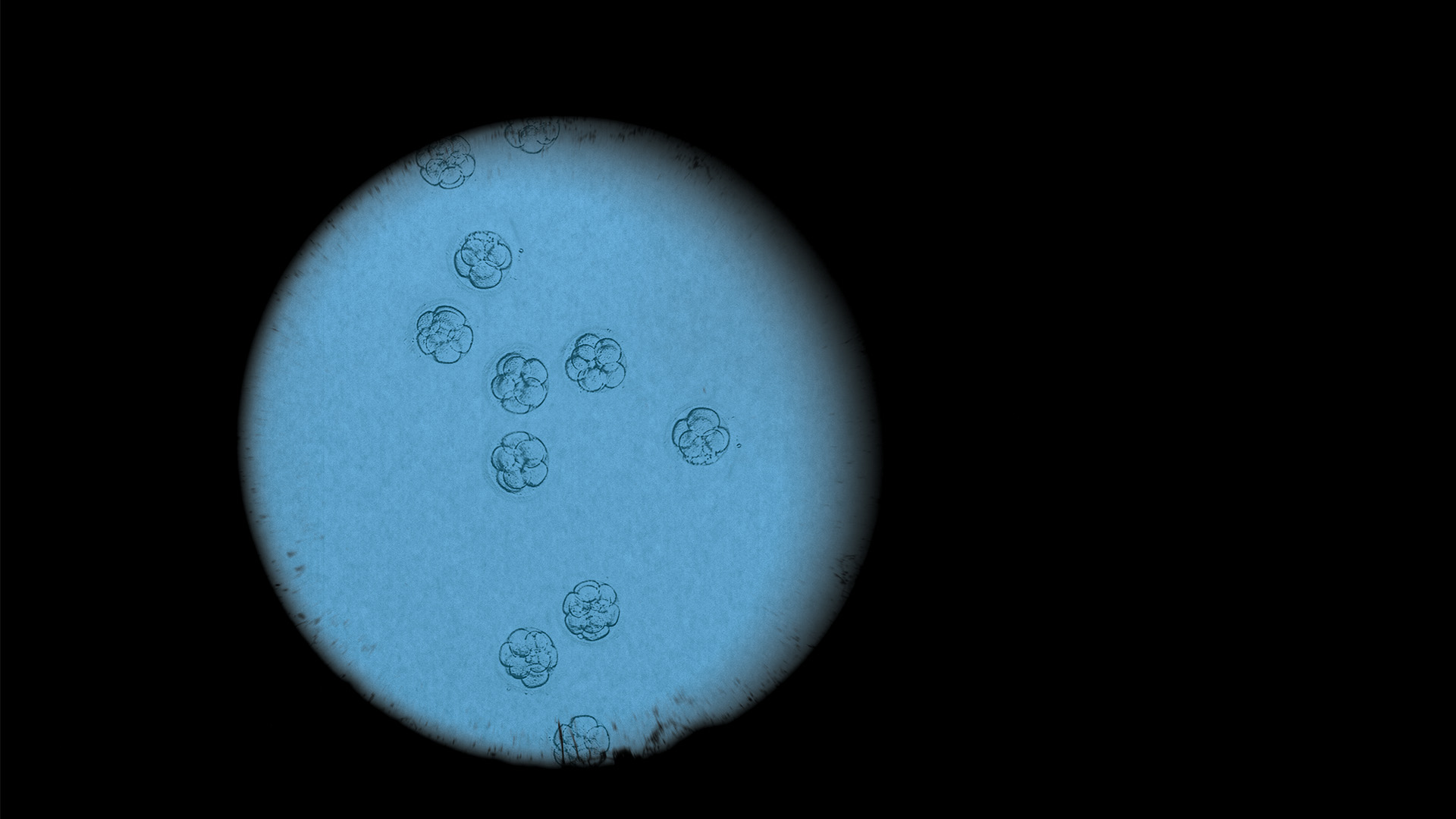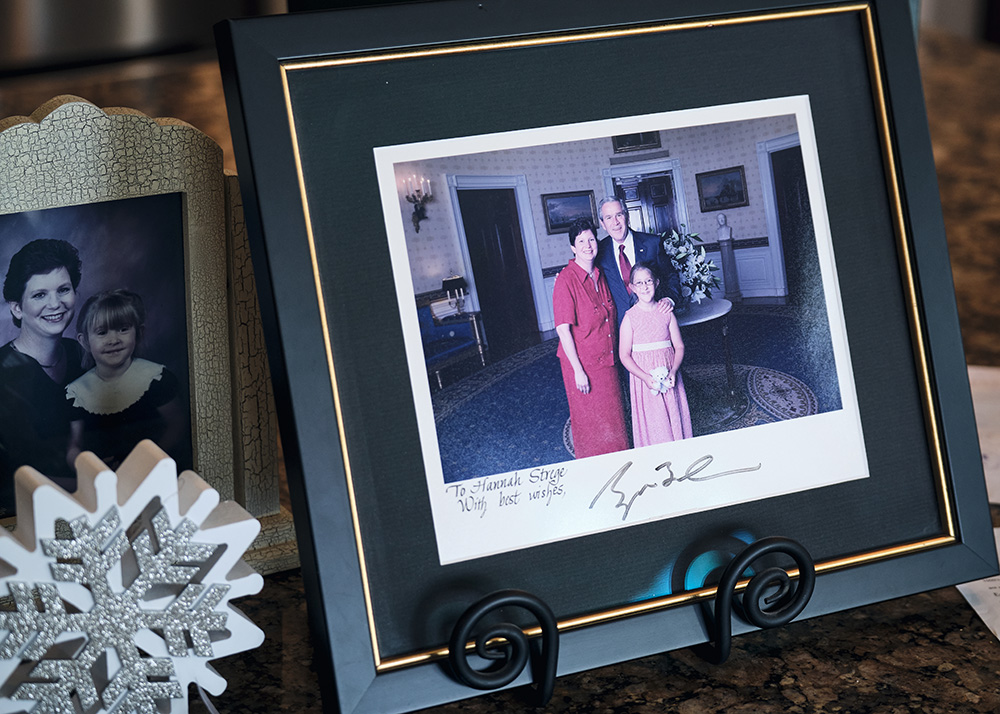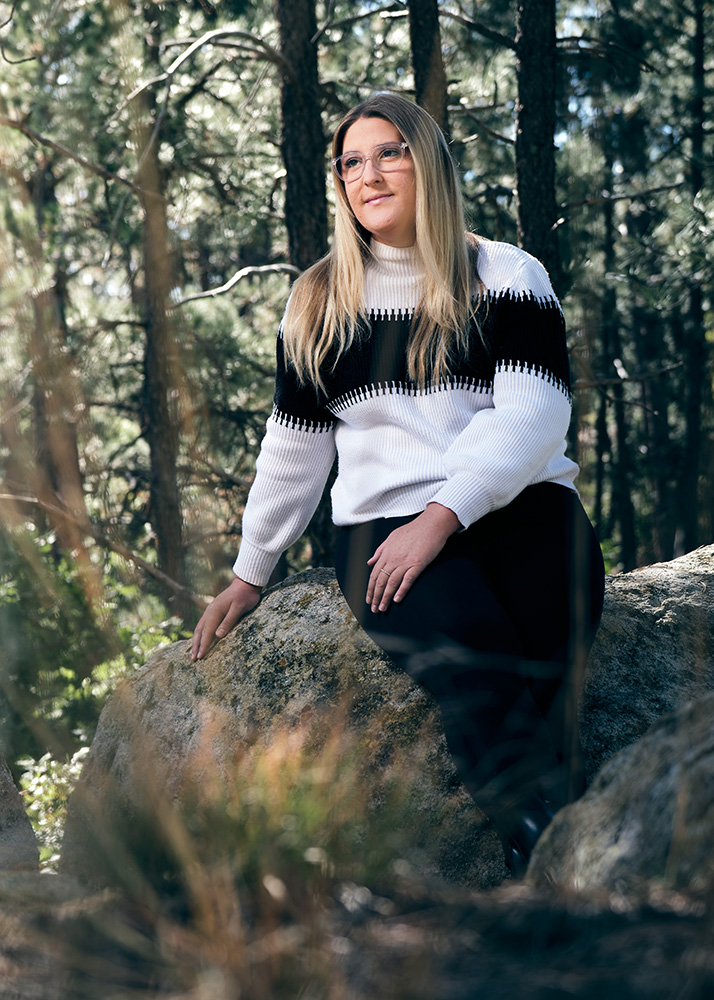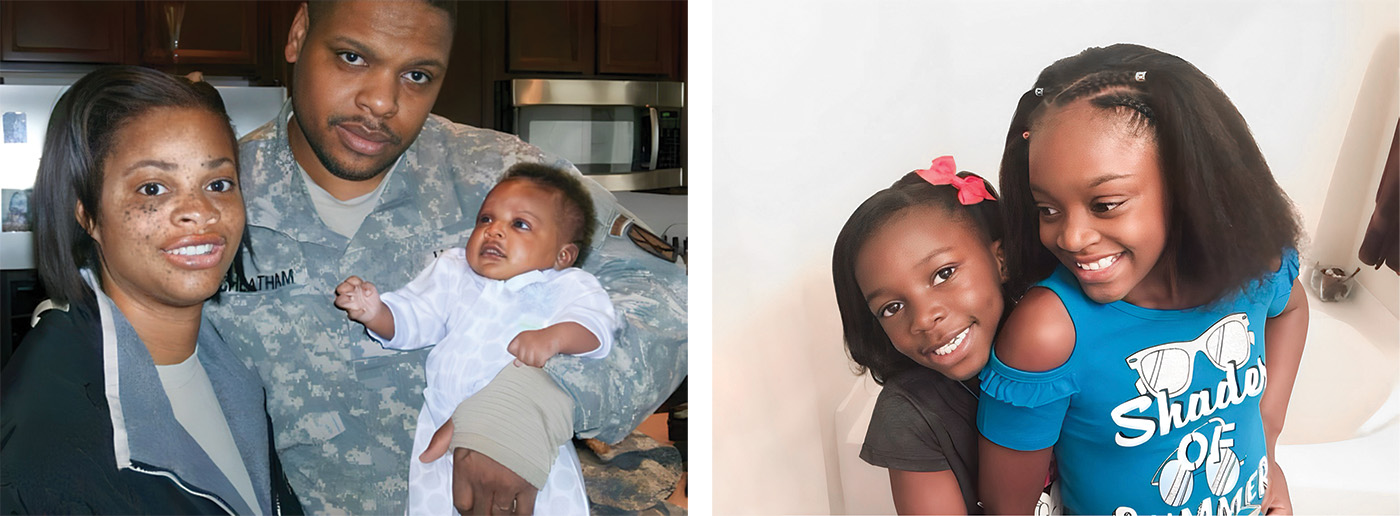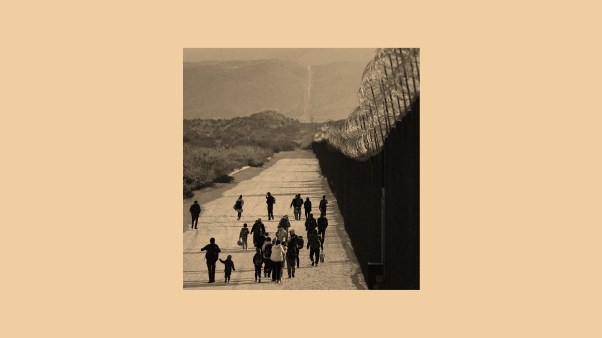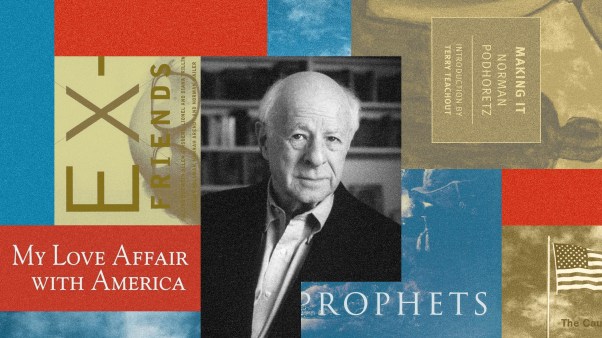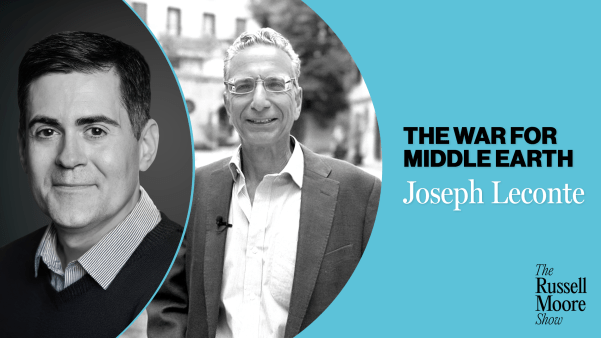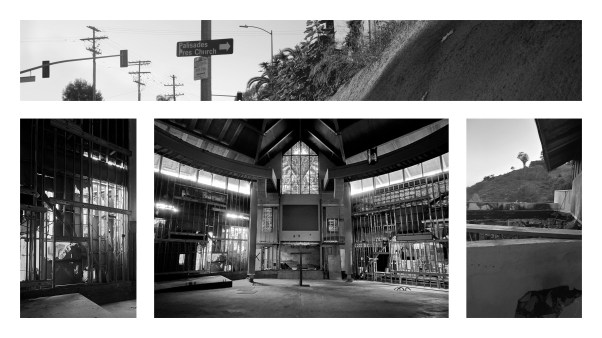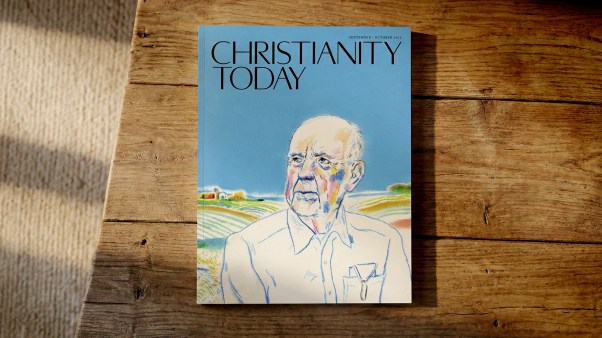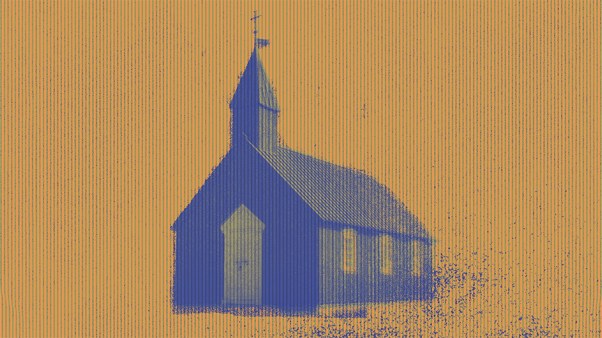Evangelicals and other pro-life advocates saw the 2022 Supreme Court’s decision on Dobbs v. Jackson Women’s Health Organization as a turning point in the fight against abortion in the United States. After the court overturned Roe v. Wade and removed federal protection for the procedure, some conservative states began introducing fetal personhood laws, granting the unborn the same rights as full-born children.
But Hannah Strege watched it all unfold with another vulnerable group in mind: frozen embryos. In this new era, would they have rights? If they did, would anyone respect them?
Strege, 24, was conceived through in vitro fertilization (IVF) in 1996 and frozen for two years. In 1997, she and 19 of her siblings were adopted in embryo form by John and Marlene Strege. They were shipped by FedEx to a local fertility clinic. Hannah was the only embryo to survive thawing and to successfully implant in Marlene’s uterus. She was born in December 1998.
“The baby is created in a laboratory and transferred to a uterus. The baby contains all the components of a separate life to become fully developed, at the time of fertilization. The frozen embryo lives outside his or her mother’s womb, ‘albeit with artificial aid,’” wrote the authors of an amicus brief submitted in July 2021 for the Dobbs case to highlight personhood at the earliest stages of development. “Hannah’s life is proof-positive of this fact.”
Hannah was not the first human born from a donated embryo—that is thought to have happened in 1984. But Hannah was born at the height of the debate over embryonic stem cell research in the late ’90s and early 2000s and is known as the first “snowflake baby” to be formally adopted in a frozen state.
The Strege family’s advocacy for embryo adoption elevated the concept in the US at a time when evangelicals were uncertain about many artificial reproductive technologies. At five months old, Hannah appeared on James Dobson’s national Focus on the Family radio show. She appeared before Congress at age two and met President George W. Bush at age seven.
“We were at the fore of an embryo adoption movement that began to allow countless other embryos in frozen storage to be given the same opportunities that Hannah had,” John Strege wrote in his memoir, A Snowflake Named Hannah. “We were obligated to make a stand on behalf of those who cannot speak for themselves, as the Bible instructs us to do, and we agreed to do so.”
Now Hannah has grown up. And so has the fertility industry.
Since Hannah was born, the number of frozen embryos sitting in storage in the United States has risen from roughly 100,000 to an estimated 1.5 million. British couples are freezing 100,000 embryos per year. Western Australia alone reported 30,000 frozen embryos in 2022. Many of these embryos—fertilized eggs in their first stages of development—remain from IVF treatments, indefinitely chilled in canisters of liquid nitrogen with no plans for their future.
There are technical complexities surrounding the storage of embryos; it’s expensive and requires office space and oversight. And there are legal complexities—frozen embryos are generally considered personal property, so destroying or mismanaging them invites serious liability.
But Christians who believe that life begins at fertilization also see serious moral complexities with this storage process. Some frozen embryos will be birthed by their genetic mothers, but thousands of others belong to parents who are done having kids. Some embryos have been stored for decades or abandoned, even as more are frozen every day.
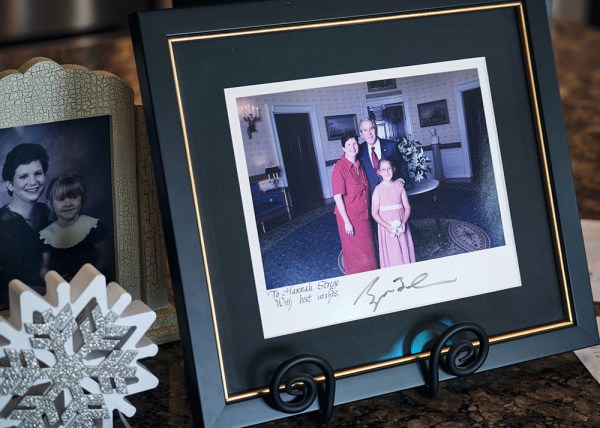 Photography by Austin Keith for Christianity Today
Photography by Austin Keith for Christianity TodayIncreasingly, evangelicals are adopting these embryos and giving birth to them as their own children. In December 2022, the Snowflakes embryo adoption program, a division of Nightlight Christian Adoptions, logged its 1,000th birth since its founding in 1997. Director Kimberly Tyson said the program is growing 20 percent year over year and in 2023 they served more than a hundred new adoptive families. Another faith-based nonprofit, the National Embryo Donation Center (NEDC) in Knoxville, Tennessee, marked its 1,400th birth from embryo adoption this year.
Nationwide, the Centers for Disease Control and Prevention (CDC) estimates that from 2004 to 2019, more than 21,000 donated embryos were transferred to wombs and nearly 8,500 of them were born. The federal government since 2002 has annually earmarked funds, most recently $1 million, for embryo adoption awareness.
Occasionally, these “snowflakes,” as Nightlight calls them, make headlines: “The embryo is just a year younger than the mother who birthed her.” “Twins born from embryos frozen nearly 30 years ago.” “They donated their embryos … and 20 years later, met the triplets that resulted.”
But these nature-defying news articles often miss the gravity of the broader situation: Globally, as many as a million or more frozen embryos are at risk of being abandoned.
I
n October, Hannah and her mom met me at the Focus on the Family headquarters in Colorado Springs. The ministry was a staple of Hannah’s childhood and a formational part of her story. Dobson addressed John and Marlene’s ethical quandary in 1997 and later hosted their family on his radio program several times, dubbing himself Hannah’s godfather.
During a break in our conversations, I meandered with the two women through a local farmer’s market. At one booth, Marlene Strege pointed out a candleholder decorated with snowflakes. Their family has received many snowflake-themed gifts in Hannah’s honor. Marlene often wears a snowflake necklace.
Hannah initially comes across as quiet and serious. But when she’s with her friends, she said, her extrovert side comes out. She reads avidly and is newly consumed with walking and training her golden retriever puppy, Aspen.
She is also continuing the mission her parents began. She has her work cut out for her: She graduated this summer with a master’s degree in social work from Baylor University, which she plans to use to promote embryo adoption and raise awareness around ethical fertility practices. She’s studying for her social work license and thinks someday she might pursue a PhD.
“If I wasn’t doing the [advocacy] work, it wouldn’t get done,” she said. “God gave me a unique story to share. To not be open about my story would be a disservice.”
Since she was young, Hannah has connected with others like her, thanks to Nightlight and her family’s awareness-raising efforts. She’s attended adoptee meetups, traveled several times to Washington, DC, and agreed to dozens of media interviews. She runs an Instagram page for embryo adoptees over the age of 14 (most embryo adoptees are teenagers or younger), since their numbers are still small enough that it can be difficult to find people with a similar story.
“I took it on as my own to be a spokesperson, because most snowflakes are younger than me,” Hannah told me.
 Photography by Austin Keith for Christianity Today
Photography by Austin Keith for Christianity TodayBut spokesperson is also a role history has chosen for her. The Strege family has been a go-to source for many other families that have adopted or plan to adopt embryos. In graduate school, where Hannah focused on adoption, she read case studies written about her. “It’s been 24 years [of advocacy], and I don’t know why it’s not widely known,” Hannah said.
Although she’s tired, in many ways she’s also just beginning her advocacy career. In addition to supporting adoptees, Hannah dreams of starting a nonprofit that facilitates adoptions and also educates fertility clinics and supports adoptive parents.
Put simply, her goal is “to see more babies born.”
One year ago in Birmingham, Rodney and Mary Leah Miller delivered twins. Dalton and Mary Elizabeth were babies No. 1,000 and 1,001 born through the Snowflakes program.
After 10 years of infertility, including several failed rounds of IVF, the Millers’ doctor suggested egg donation. Uncomfortable with that option, the Millers heard about embryo adoption from a friend and began to research the possibility.
“I think it was the first time we had a renewed sense of hope,” Mary Leah said. Prayerfully, and with counsel from their pastor, they moved forward, and the twins were born following one failed transfer and one miscarriage. They have three more embryos from that adoption and plan to continue growing their family.
“These children are everything we always hoped and dreamed for,” Rodney Miller said.
Most women exploring embryo adoption have already tried IVF, Kimberly Tyson said. Around one in six adults deals with infertility, which can affect both men and women, according to the World Health Organization. A recent Pew Research Center study found that around 1 percent of American women have received IVF or artificial insemination.
But fertility treatments are becoming more common. The Pew study also found that 42 percent of adults in the US either have personally undergone some form of fertility treatment or know someone who has, compared to one-third of adults who did five years ago.
In vitro fertilization is costly, ranging from $10,000 to $25,000 per cycle, during which a woman is injected with hormones and her eggs are withdrawn and fertilized. And couples are not always fully informed about its downsides: While IVF has come a long way in terms of safety and efficiency, most treatment cycles are still unsuccessful.
 Courtesy of the Cheatham Family
Courtesy of the Cheatham Family“The 770,000 IVF babies born in 2018 required some 3 [million] cycles,” an editorial in The Economist reported. “In America and Britain roughly half go home with a baby in their arms, even after several years and as many as eight cycles of treatment.”
Those daunting statistics are one reason fertility centers encourage women to retrieve many eggs and create multiple embryos on the front end of treatments. It increases the chances of conceiving—and frequently creates more embryos than a couple can actually birth.
Chris and Rebecca Henderson were married in 1992. After 12 years of trying to have children, they were advised to explore IVF. Uncertain but prayerful, they moved forward and created 13 embryos, and two were born as fraternal twins.
When the twins were six months old, the Hendersons’ fertility clinic began to ask about next steps for their 11 remaining embryos. Rebecca was advised not to have more children, so the Hendersons faced a difficult decision.
Most people with remaining embryos in storage have a few options. They can discard them. They can donate the embryos for scientific research—though few labs take embryos from IVF due to limited government funding. Following Dobbs, the “volume of embryos donated to research has been reduced significantly,” an IVF laboratory director for Stanford Medicine Fertility and Reproductive Health told The Washington Post.
Alternatively, embryos can be frozen in storage for a monthly fee ranging from $500 to $1,000. Or embryos can be given to another family that wants to raise them as their own.
“The longer the embryos are stored, the more likely [the families] are to walk away,” Tyson said.
Some clinics feel overwhelmed by the growing volume of embryos sitting in storage, as the nitrogen canisters take up space and doctors may create dozens of embryos per patient. One doctor told NBC News in 2019 that some patients have 40–60 eggs retrieved in a cycle, and “the embryologist gets the orders from her doctor to inseminate all of them—and the question isn’t asked if the patient even wants that many inseminated. … Nobody’s going to have 30 kids.”
“We were not prepared for any of this,” a Florida reproductive endocrinologist told NBC News. “Twenty-one percent of our embryos have been abandoned.”
 Courtesy of the Henderson and Gassman Families
Courtesy of the Henderson and Gassman FamiliesThe Hendersons, though, found Snowflakes and were matched with Dan and Kelli Gassman.
“It’s a roller-coaster ride of emotions in deciding to sign over, even when you step outside of yourself and think of it rationally,” Rebecca said. “We loved this option, but it took us a while emotionally to get to that point.”
Kelli married in her early 40s. After several years of trying to conceive, the Gassmans turned to embryo adoption and ultimately adopted the Hendersons’ 11 embryos. At age 46, Kelli gave birth to Trevor, who is now 10. A year later, she gave birth to Aubrey.
“It’s the most selfless gift anyone has ever given me,” Kelli said.
The Henderson-Gassman adoption was initially a partially open adoption, where all communication was mediated by the adoption agency. But soon the families decided to meet, and then they continued meeting. Now they vacation together annually, and the children are like cousins. Their story is unique, but the families say that it’s “bigger than us.”
“It’s a very emotional journey,” Rebecca said. “But if you can put yourself on the back burner and see that it’s a great path for parenthood … it can be a great path to help others have children who cannot.”
Many Christian couples who struggle with infertility feel uncomfortable using donated eggs or sperm. And if they don’t pursue IVF because of cost, low success rates, or moral objections, they generally turn to adoption to grow their families.
But not all adoption is equal.
There are at least 369 fertility clinics in the United States that have performed donated embryo transfers, a CDC study found. They rarely function like traditional adoption agencies, since embryo donation involves far less red tape than adopting a child. Embryo recipients generally arrive at a fertility clinic having already found an embryo donor—through networking groups or even on social media.
On the plus side, this informality helps make embryo adoption relatively affordable. Implanting a donated embryo costs half the price of IVF and a third of the price of a private adoption.
But while some fertility clinics require patients to participate in some level of counseling, new parents often receive little support beyond that, compared to parents who adopt traditionally.
Hannah Strege thinks embryo-adopting families should participate in every part of an adoption process, including home studies and interviews, which most fertility clinics don’t offer. She also wants to see standards raised across the embryo donation industry. If embryos are people, after all, they should not simply be traded on social media without some additional layers of protection.
“Embryo adoption is in the best interest of the child, versus the interest of the [placing] family,” Hannah said. “God knows where he has your child.”
Only a few embryo organizations facilitate embryo transfers as adoptions, matching potential adoptive families with “donor” families who want to place their embryos up for adoption. Most of them are faith based, and the two largest are Nightlight, an adoption agency which has locations across the US, and the NEDC in Knoxville.
The NEDC launched in 2003 as a nonprofit facilitating embryo donations and adoptions. Donor families from across North America sign their rights over to the NEDC, and the adoptive family can browse through a digital catalog of the thousands of embryos stored on site. The organization does not require families to be religious, but it does require adoptive couples to be heterosexual and married.
“There’s no empirical data, but anecdotally, the vast majority of people who come through are Christian, and most of those are evangelicals—and a significant amount of Catholics as well,” said spokesperson Mark Mellinger. Embryo adoption “tends to resonate with evangelical believers.” He estimates that the NEDC performs about 10 percent of all US embryo adoption transfers per year.
Most donated embryos are Caucasian, Asian, or Hispanic. Very few are African American, Mellinger said, and they are saved for Black adoptive families. “We generally reserve minority embryos to be matched with recipients of the same ethnic background,” he added.
The NEDC facilitates both donations and transfers to families who want to adopt. It works closely with an onsite clinic in Knoxville and outsources some of the adoption process, such as home studies, to accredited providers like Nightlight. The NEDC offers both open and closed adoptions.
Unlike the NEDC, Nightlight’s Snowflakes program has no affiliation with fertility clinics. It works as a liaison for families who want to surrender their embryos, adoptive families, and fertility clinics nationwide that can perform the transfer procedure. Tyson and her team match adopting and donating families based on mutual requirements, which means that many of their families are evangelical, two-parent households. They encourage families to communicate early on, with both families choosing the kind of relationship they will hold in the future. The number one reason that families adopt via embryo adoption is that the woman wants to experience pregnancy and childbirth,” Tyson said. “They want to give birth to a baby.”
Tyson estimates that maybe 20 percent of embryo adopters are driven by altruism, people eager to give embryos a chance at a life instead of pursuing a child who has already been born.
But there are also outspoken critics of embryo adoption. They argue that to participate in the industry is to participate in an unethical system and promote the overproduction of embryos. Some say adopted children will struggle with their origin stories the way traditional adoptees do. Others are parents who struggle with the idea of surrendering their embryos to other families.
Jennifer Lahl, a bioethics advocate and founder of The Center for Bioethics and Culture Network, believes that “our obligation is first to the orphan among us and the needs of children here now who are without a loving home to be raised in.”
Matthew Lee Anderson, a Christian ethicist and professor at Baylor University, believes adoption can’t ultimately solve the surplus embryo problem. He argues that evangelicals, on the whole, don’t have the capacity to adopt every child needing a family and every embryo deserving to be born.
“It’s not a problem; it’s a grave moral crisis,” he said. “If embryo adoption, as a practice, extends the manner of thinking that brought [embryos] there in the first place, then I think we ought to look on it with a wary eye.” He believes that embryos who cannot be born should be allowed to “go back to God” with contrition and lament.
Most other critics, however, agree that if an embryo can’t be born to the genetic parents, adoption—ideally, open adoption—is the only positive outcome for these tiny lives caught in a global fertility crisis.
Embryos are not leftover or unused, “as though they were things or tools,” wrote Russell Moore (now CT’s editor in chief) in 2012. “These are image-bearing persons who are endowed by their Creator, not by their ‘usefulness’ with certain inalienable rights. Opening our hearts, and our homes, and sometimes our wombs, to the least of these is a Christ-like thing to do.”
Aaron and Jennifer Wilson agree. Quintessential US evangelicals, they live in Nashville, where Aaron works for Lifeway and Jennifer works for Union University, both homeschooling their 12-year-old twins. As newlyweds, they had stumbled upon a Baptist Press article about embryo adoption and were immediately excited at the possibility. But they put the idea on hold.
Three years later, still childless, they were encouraged to try IVF—a process they were uncomfortable pursuing.
“We made a call in the parking lot at the doctor’s office the day we got the diagnosis,” Aaron, 42, said. Two weeks after talking to the NEDC on the phone, they applied for embryo adoption. After two failed transfers, they welcomed their twins into the world via C-section. “Embryo adoption resonated with us, because we are also very passionate about pro-life options. …Embryos are invisible to the naked eye, but they are microscopic souls.”
God called Jesus a person when he was still in Mary’s womb, Aaron pointed out. “God humbled himself into the form of an embryo … as only a few cells, the size of a pixel,” he said. “Embryo adoption really just opened my eyes to the wonder of the Incarnation.”
For many Christians like Hannah who believe that life begins at fertilization, it’s not enough to see stored embryos be born into the world. They want to see the number of frozen embryos stop growing.
“Embryo adoption is trying to solve a problem of excess embryos,” said John Strege, Hannah’s dad. The problem, and its solution, is twofold, advocates say: Too many embryos are being created, and too many are being abandoned. (Some studies have also suggested that prolonged freezing can harm embryos.)
Advocates agree that in an ideal world, the first solution is to prevent the proliferation of frozen embryos, through regulations or simply awareness and education. Some see the solution being in laws and regulations in the fertility industry. In Germany, for example, freezing embryos is banned except under rare circumstances.
“I don’t believe embryo adoption should be needed—what is needed is a federal law like Germany’s,” said Lahl.
Fertility doctors and clinics should also educate patients on the long-term implications of creating and storing embryos, advocates like Hannah say.
“I would highly recommend [families] create the number of embryos that would be immediately implanted each cycle,” said Jeffrey Barrows, a former ob-gyn and senior vice president of bioethics and public policy at the Christian Medical and Dental Association.
He acknowledges that this is more expensive and physically demanding—removing and fertilizing one egg at a time is less efficient than creating whole batches of embryos. But Barrows thinks such personal choices are a better solution than legislation, because laws can backfire on Christian organizations (governments might impose requirements that go against a group’s convictions). “You’re saving human lives—it’s worth the money and extra cycles.”
Many families who donate or place their embryos for adoption say they weren’t properly educated or didn’t think through the long-term results of creating more embryos than they could give birth to.
Some, like Lahl and Barrows, say families, as able, should bring their remaining embryos into the world as the best possible solution for the children. And Aaron Wilson observed that if parents die without surrendering their embryos, legal responsibility could potentially pass to their children—the embryos’ siblings.
“The child’s perspective is often missed,” Barrows said. “It is ideal for the child to grow up with genetic parents.”
In addition to wanting to see fewer excess embryos formed, Hannah just wants more families to consider embryo adoption, whether they are able to conceive naturally or not. “People are so in love with their own egg and sperm and not considering adoption,” she said. “I want to see more lives saved through embryo adoption.”
The Strege family has heard many stories of families who ultimately pursued embryo adoption after hearing Hannah’s story on the radio, in a news article, or through word of mouth.
As Hannah and her mom talked with me over steaming cups of chili from Focus on the Family’s cafeteria, Whit’s End, a young Canadian woman from an nearby table interrupted us.
“I felt God told me to talk to you, because I’ve been listening to your conversation,” she said, holding back tears and stumbling over her words. “My husband and I have been struggling with infertility for several years and have been talking about next steps. I’ve heard about embryo adoption and have been waiting for confirmation that it is the right direction for us.” Meeting Hannah and Marlene on a random afternoon seemed like divine confirmation, she said.
It’s these little conversations, day after day, that are just as important for the work of adoption awareness as the trips to Washington and the radio interviews, Hannah said.
The work can feel exhausting—explaining for the thousandth time what an embryo is, or why someone should use adoption language to recognize embryos’ humanity. But it’s these conversations that are slowly making embryo adoption more commonplace among evangelicals.
The numbers may seem impossible, but they’re not hopeless. If Hannah’s aspirations come true, every snowflake could one day have a chance at growing up.
Kara Bettis Carvalho is an associate editor at Christianity Today.

